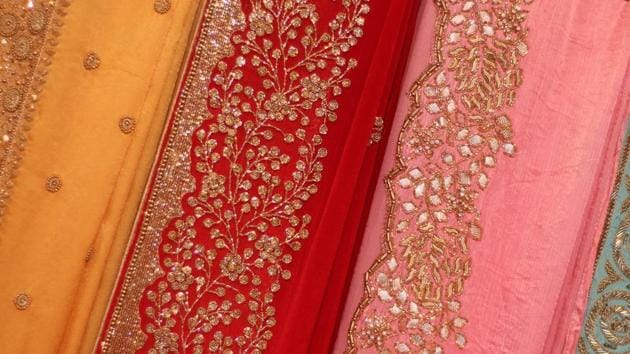Is the sari a Hindu garment? Ask Mumbai’s native Christians
The author of the NYT article calling the sari a Hindu garment has been accused of ‘prejudice’ and ‘ignorance’, and rightly so
The New York Times (NYT) has been criticised for publishing a poorly researched report that called the sari a ‘Hindu’ garment, and suggesting that the national government was promoting the garment for parochial reasons.

The author has been accused of ‘prejudice’ and ‘ignorance’, and rightly so. Fashion designers have said that campaigns to convince women to wear the sari more often, predates the current government. The sari is a South Asian garment – Sri Lanka has its Osari and Bangladesh has its Dhakai weave, among other variations. In Pakistan, the garment has its ebb and flow depending on who is ruling the country – the sari was fashionable among the elites till military ruler Zia-ul-Haq’s Islamisation experiment in the late seventies. Indian soap operas have created a renewed interest for the draped clothing.
Not all Hindu women used the sari as their traditional dress – in Punjab, Rajasthan, Haryana, for example- but there are non-Hindu groups that considered the sari as de rigueur wear. Parsi-Zoroastrians treasure as heirlooms their embroidered saris called the gara, specimens of which can cost over Rs 100,000. Mumbai’s native Christians, called East Indians, have their version which they call the lugra. A variation of the Maharashtrian nine-yard sari, it is distinctive because each sub-caste – the East Indians are descendants of groups like Kolis, Agris, Bhandaris which were converted to Roman Catholicism by the Portuguese in the 16th and 17th centuries – had their own style and colour preference, with red and green predominating.
Fashion designer James Ferreira who is an East Indian, said that every community has its sari style. “In a Manglorean (Catholic) wedding the bride wears a red sari,” said Ferreira. “What that man (the NYT author) is saying is rubbish and even a piece of cloth is given a communal tinge.”
The East Indian sari was on the verge of extinction as the community’s villages – spread along the coast between Alibaug and Palghar – were pulled into Mumbai’s urban embrace. While the sari persisted in the semi-urban areas of Thane and Raigad districts, it had disappeared in the community’s villages – called gaothans - Mumbai. “Slowly because of westernisation people had abandoned the lugra; only the older generation wore it and the tradition was dying out,” said Godfrey Pimenta of the East Indian Association.
In 2003, the community started a movement to revive the garment. “Lot of East Indians still wears the sari; they are proud of the garment. In fact, we are in the midst of reviving it,” said Ferreira, whose boutique is located in Khotachiwadi, a gaothan in south Mumbai.
Community associations played a big role in making the lugras popular among the young generation. “We started a fashion event in Marol (a locality in Andheri) where young people did a catwalk wearing a lugra and in 2005, at Bandra festival, East Indian women came dressed in the saris,” said Pimenta. “Slowly it started catching on.”
Pimenta’s daughter is getting married in December and one of the events at the wedding will include a family gathering where the women will be dressed in lugras.
Joyce Mendonca, a resident of Bhayandar, said that her mother and aunt wore lugras and her grandchildren will wear the saris to the Pimenta wedding in December. “It is coming back to traditional mode; girls are wearing it to community functions,” said Mendonca who added that men are stitching shirts from fabric that have traditional lugra patterns. “We are proud of our lugra.”
The saree will be on display at the East Indian singing competition to be held in Chimbai village, Bandra, this week.
According to Pimenta there are now at least five shops in the city where the sari is sold. The lugras are less regularly seen in the East Indian villages but shops continue to stock them. Jigar Parikh, who is the third generation in his family to run a cloth store in Mahim, said that his shop will continue to keep supplies. “My grandfather started the business, going to villages like Uttan and Gorai to sell the saris. My father did not want to do that and sold the saris at the shop,” said Parikh. “Sales may be down but this is an old shop and people continue to come here for the saris.”
Stay updated with all the Breaking News and Latest News from Mumbai. Click here for comprehensive coverage of top Cities including Bengaluru, Delhi, Hyderabad, and more across India along with Stay informed on the latest happenings in World News.
Stay updated with all the Breaking News and Latest News from Mumbai. Click here for comprehensive coverage of top Cities including Bengaluru, Delhi, Hyderabad, and more across India along with Stay informed on the latest happenings in World News.





